Special Feature

Floral Tales of Shonai Sakura
Spring in Japan is a time when the land is dyed pale pink by sakura cherry blossoms.
It is a beautiful season when one can feel the breath of fresh life in the air. Living amid the changing seasons, Japanese people have always expressed their joy and the sorrow that follows from watching the lifecycle of these trees: the new buds, the flowers in full bloom, the blizzard of cherry blossoms as they scatter and fall, and the bare branches.
As Shonai gradually begins to change in color, we spoke to five people regarding sakura trees.
May the many cherry blossoms bloom beautifully and brilliantly each spring.
Seeing Cherry Blossoms from a New Perspective
When spring comes calling there are two specific cherry trees in Shonai that I have a reunion with. Both are weeping cherry trees; one located at Seiko-ji Temple, and the other in Suge-ke Teien Garden. I say I have a reunion with these two trees as it feels as though they, and their blossoms, are waiting for me every year to come and visit.
I first learned about the weeping cherry tree at Seiko-ji Temple seven years ago. This tree stands at the back of the garden of Seiko-ji Temple, on a slope leading to a mountain where the neighboring Oga-jinja Shrine is located. Every year when the tree blooms, the temple lays out a scarlet carpet on the veranda facing the garden in which it grows.
One year, for what must have been just a brief moment, I was the only one sitting on the veranda. I was mesmerized by the branches that carry hundreds of years of history; bearing countless petals, drooping and swaying in the wind. I must have been gazing intently because, as I continued to watch, it began to look as if those innumerable petals had gathered together and, like some living creature, were moving to-and-fro.
Another reason I like this cherry tree is that, like some waterfalls, it is possible to stand behind its cascading veil and view the scenery looking out from within. When you reach the top of the stone steps that lead to Oga-jinja Shrine, you can find this cherry blossom tree, which allows you to enjoy a “behind the veil” perspective, standing diagonally to the right. Under the tree, the backlit blossoms take on a gorgeous monochrome color, hanging forward like the brim of a hat that has been pulled down.
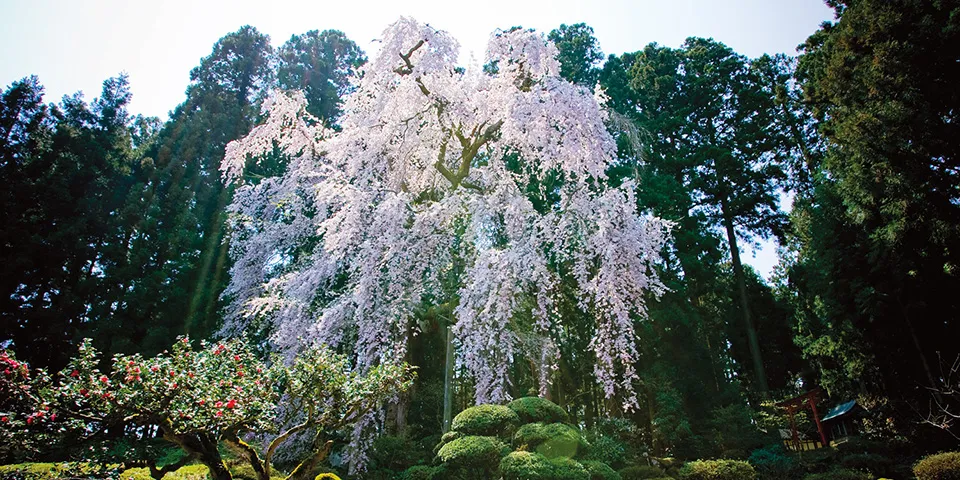
On the other hand, the weeping cherry tree in the Suge-ke Teien Garden in Kachu-Shin-machi acts as a counterpart to a pine tree which exemplifies its beauty.
I must confess, I have only caught a glimpse of this graceful cherry tree and have yet to cast a truly discerning eye upon it. It was when I stopped by on some personal business and was chatting with the wife of the head of the family to whom this garden belongs. The petals were just beginning to fall and there is no doubt in my mind that in that moment the falling blossoms distracted my eyes from the tree toward the ground. It was then that I realized that the joy of cherry blossoms also lies in the way they fall upon the moss, garden stones, and pond.
Kuniko Okochi
Professor, National Institute of Technology, Tsuruoka College
Representative, Tsuruoka Renaissance Association
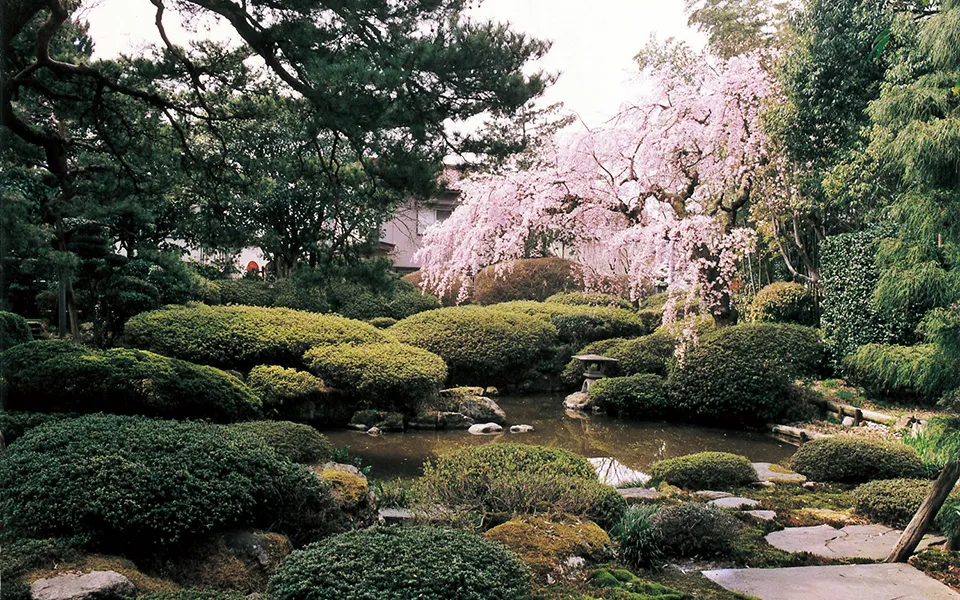
Shonai’s cherry blossoms are nice to see up close, but there’s also something special about seeing them as a pink haze in the mountains from a distance.
The deep pink Oyamazakura cherry blossoms blooming in the mountains across the Mogami River, the cherry blossoms blooming near the peaks in the background of the Shonai Eigamura (Shonai Movie Village), and a single cherry tree visible on the slopes of a mountain at Yutagawa are all especially beautiful, and I cannot help but love the clusters of Kasumizakura flowers blooming on Mt. Arakura near the coast.
I believe that this scenery, which many find so tasteful and beautiful, is most likely akin to the lush landscape present at the time the ancestors of the Japanese peoples came to this land.
For the Japanese, cherry blossoms are the “spiritual nourishment of life.”
No matter how bad the economy is or how many natural disasters occur, people can encounter these treasured flowers come springtime and be filled with new hope. After a snowy winter, spring is a time of rebirth in the sunlight. At that time, even if the cherry blossoms are at the end of their lives, each year they will continue to be reborn, succeeding generations.
For plants, blooming flowers and bearing fruit means approaching death. If the aesthetics of cherry blossoms are a drama of alternating life and death, then they can be said to be “the way of living.”
With the many religious and ethnic conflicts that beset the world today, perhaps the vitality, richness, and scale of the beauty of cherry blossoms should be reevaluated.
Hiroshi Suzuki
Former Professor, Faculty of Agriculture, Yamagata University
Research field: Sapling production, ornamental plants
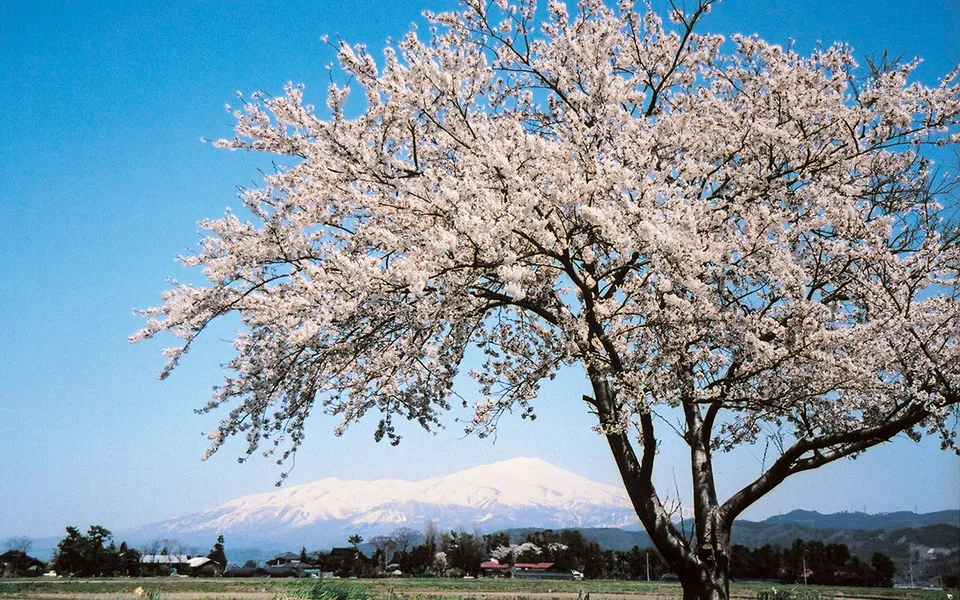
Cherry Blossoms That Color Nature
Among the vegetation of Yamagata Prefecture, including Shonai, there exists a group of plants that are said to have “elements of the Sea of Japan.” There are about 150 species, most of which can be found in the Shonai region.
Naturally, within this group of flora, there are also trees that are said to contain elements of the Sea of Japan, such as Oku-Chojizakura; which is a shrub to subcanopy tree. While Chojizakura blooms on the eastern side of Honshu, this variant, Oku-Chojizakura, blooms in snowy areas on the western side of Honshu. Oku-Chojizakura is the earliest flowering cherry tree to grow wild in the prefecture.
Additionally, Oyamazakura are the deep pink-colored trees that can be found scattered deep in the mountains. It belongs to the Yamazakura (mountain cherry) group of cherry trees, and in Shonai, this cherry tree is sometimes called the mountain cherry tree, but the true Yamazakura does not grow wild in Yamagata Prefecture.
Another tree in the same Yamazakura group is Kasumizakura. Back in the day, the fruits of this tree were used to make bullets for bamboo guns.
The flowers are pale in color and bloom somewhat late, so they can be seen in various places around the time when the Somei yoshino cherry trees in urban areas finish blooming. Similarly, there is Oshimazakura, a cherry tree that grows wild only on Izu-Oshima and the Boso Peninsula, where it blooms with distinctive pure white flowers. You can also see them planted as roadside trees in Shonai.
As a plant, cherry blossoms are highly mutable and therefore prone to hybridization. The fact that hybrids can occur means that there are parent trees, but these may also be a mixture of wild and cultivated species. Furthermore, new varieties are constantly being developed through diligent research. This makes the classification of cherry blossoms extremely complex.
However, this diversity of the plant makes Japanese cherry blossoms even more profound.
Shozo Domon
Vice President, Flora Yamagata
Preserving the Shonai Cherry Blossom Landscape
There are many ornamental cultivars of cherry trees in Japan, and Somei yoshino is the most popular among them. In reality, however, they are susceptible to disease and pest damage and will not bloom beautifully without proper care.Knowing this, what kind of efforts are needed to protect the cherry trees of Shonai? We reached out to a professional.
“There is a proverb that goes, ‘a person who prunes cherry trees is a fool, but so is the person who does not prune plum trees.’ This does not mean that cherry trees should not be trimmed, but rather that cherry trees need proper pruning,” stated Kan-ichi Umetsu of the Yamagata Prefectural Government Shonai Area Branch Forest Management Division. Somei yoshino is susceptible to a contagious disease called witch’s broom that prevents the diseased branches from blooming. As soon as diseased branches are discovered, they are promptly removed.
Additionally, Shonai is an area with four distinct seasons, so the impact of climatic conditions is also a big concern. “Heavy snowfall is ideal for protecting the roots of cherry trees from the cold wind. If the trees dry out, the flower buds may fall off, so it’s a good idea to cover the base in winter when there is little snow,” explained Sakai Watabe of Shonai Engei Ryokka Co., Ltd. Another cause of damage to the roots is trampling, which occurs when people step on the roots. This human action is also a cause of great damage to the tree.
Despite these tribulations, cherry trees manage to bloom beautifully every year. To maintain this, it is important to look after them not only during the flowering season, but also on a habitual basis throughout the year.
It would be great if each and every one of us could become cherry blossom guardians, so as to help cultivate a cherry blossom landscape that is unique to Shonai.
Sakai Watabe
Shonai Engei Ryokka Co., Ltd.
Kan-ichi Umetsu
Forest Management Division, Yamagata Prefectural Government Shonai Area Branch
-
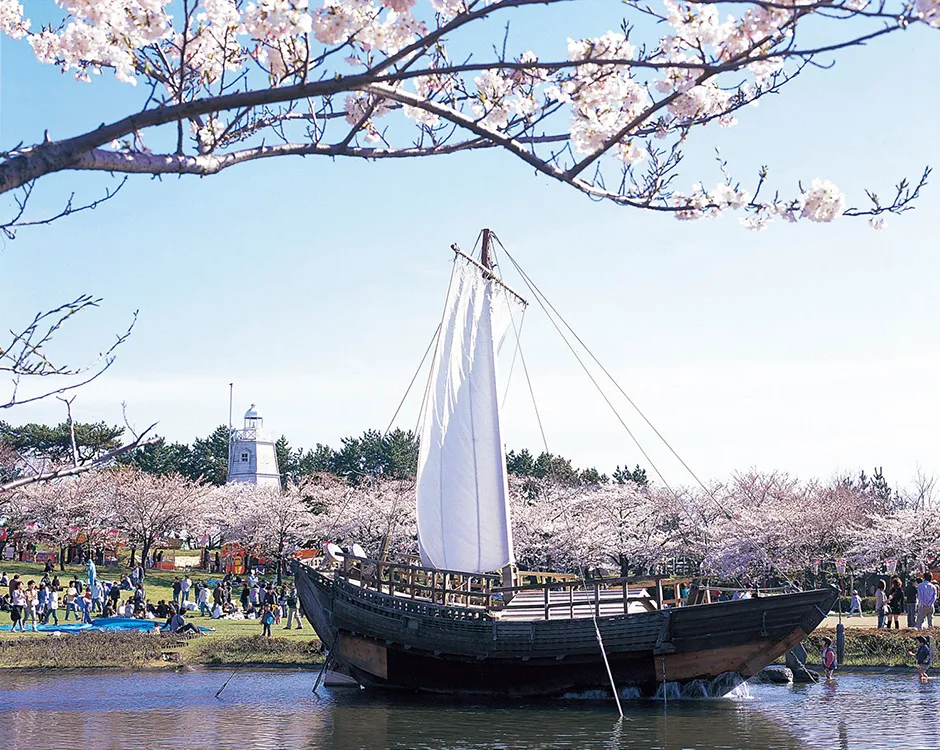
Hiyoriyama Park (Sakata City) -
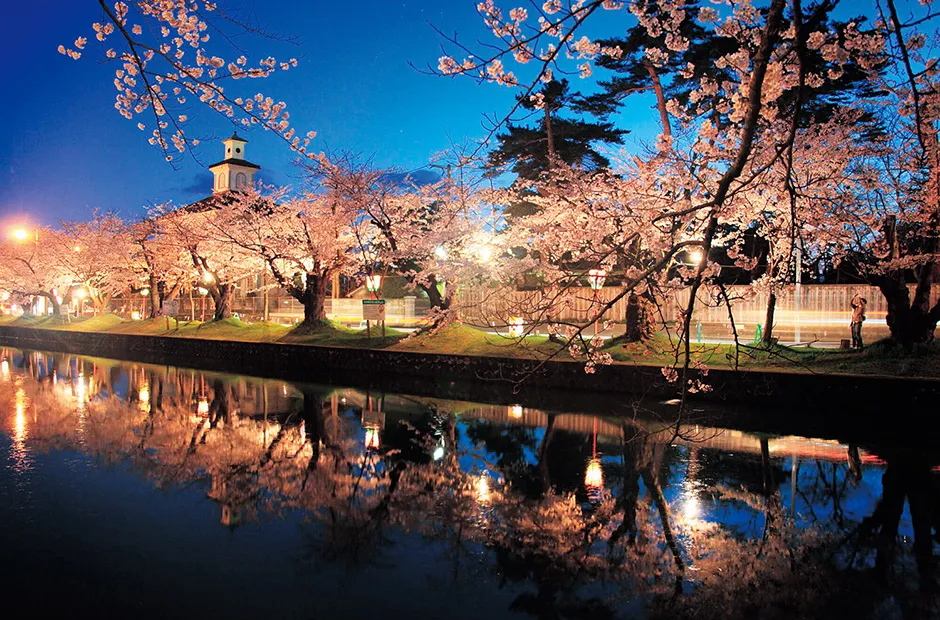
Tsuruoka Park (Tsuruoka City) -
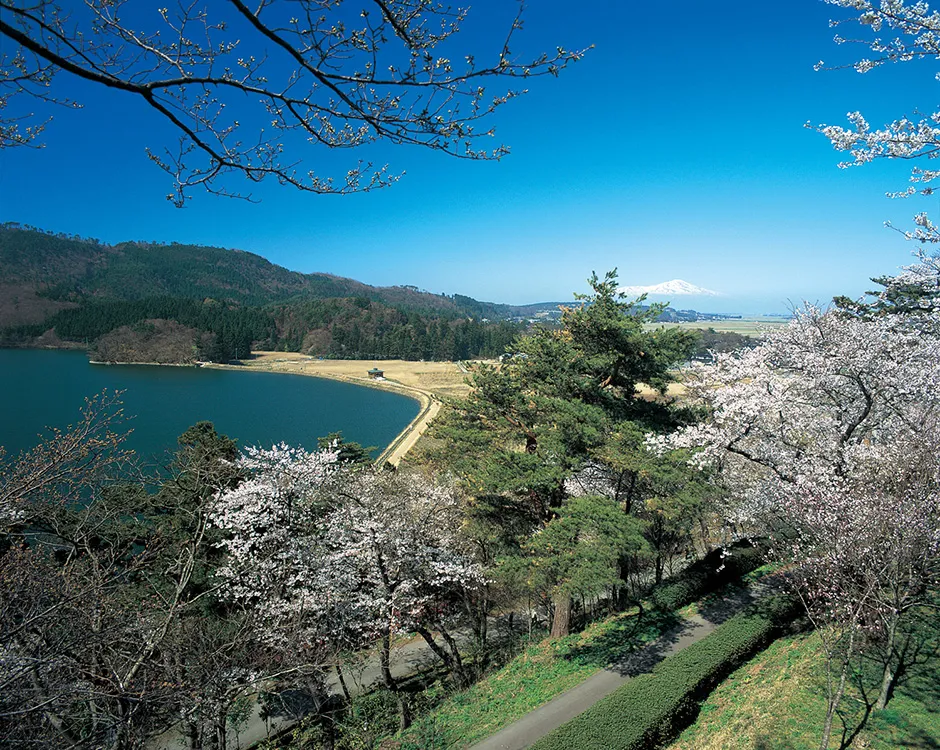
Oyama Park (Tsuruoka City) -

Koide-numa Pond (Shonai-machi) -
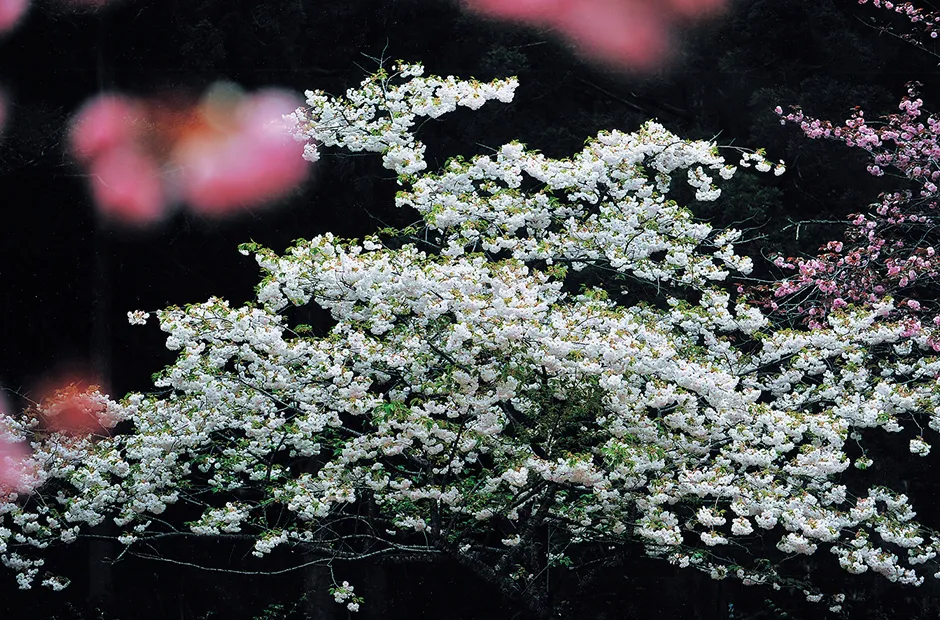
Ezotate Park (Tsuruoka City) -
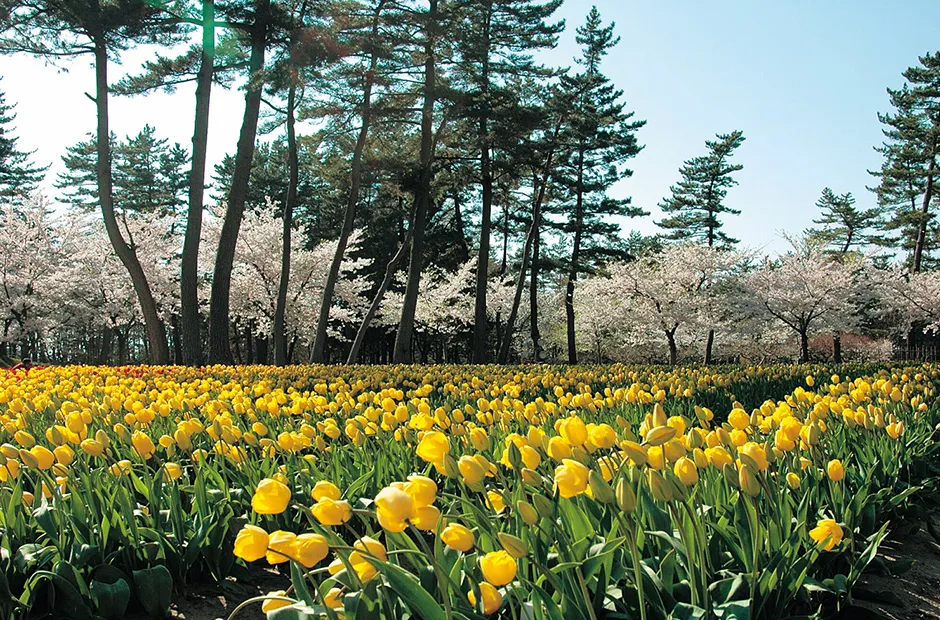
Ikoinomura Shonai (Tsuruoka City)
